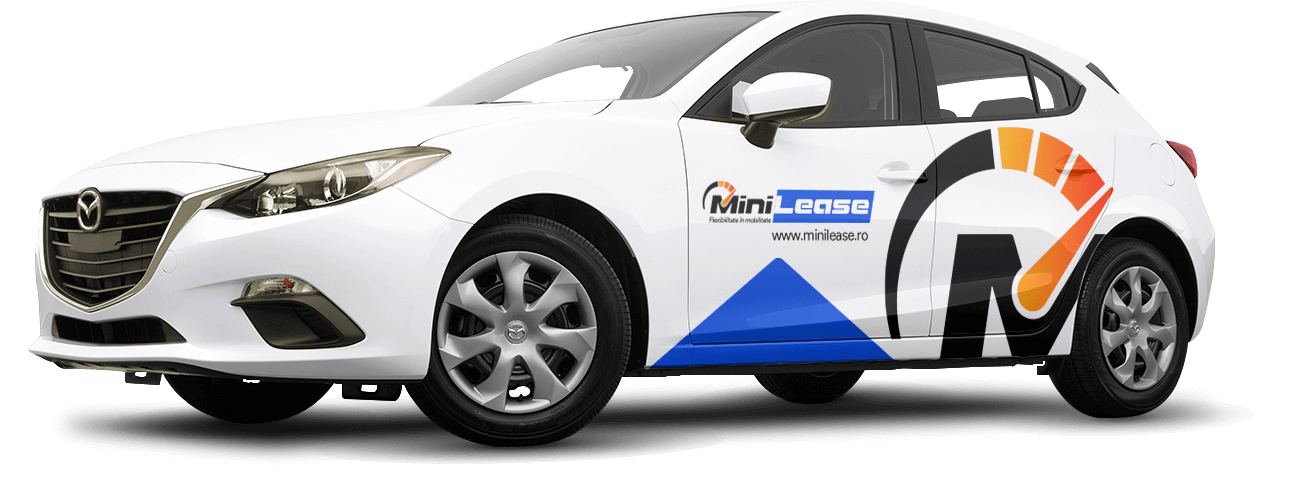Usually, if you need a car, there are five ways to get one: buying a new or used one, bank loan, financial leasing, operational leasing or short-term rental. There seem to be enough options, but none of them correctly cover the needs of a company with time-bound projects, which require mobility and punctual human resources (internal or external).
That's why MiniLease introduces an alternative: car subscription services (long-term rental). Basically, for a monthly fee that includes everything except the fuel you can benefit from one car, or more, without a contract that blocks you in the long run and without immobilizing your company's liquidity in substantial down payments. This type of subscription (long term rental) is by far the most cost effective. Why? Because it gives you the Flexibility to change the car according to the needs that arise over time. Because it offers you the Comfort to configure the subscription and manage it easily, depending on what you really need. Because it is Transparent, not hiding taxes or unpleasant surprises. Because it will not force you to negotiate, everything being established correctly from the very beginning. Because it generates cost savings by using the right car, only for the period you need.
The MiniLease subscription offers less commitment and more freedom due to periods that can be reduced to 1 month rental. There is no need for a credit score and approvals from financial institutions as is the case with leasing or credit. It does not immobilize the company's liquidity as it happens in the case of the direct purchase of a car.
Subscription schemes can be found under different names: flexible rental or long-term rental. The essential idea is that you have a car for as long as you want: from one month to several years. You can conclude the contract or you can change the car, subject to the conditions. While the lease (financial or operational) has a period of 1 to 5 years, with the payment of an advance ranging between 10% and 25%, the subscription has only a monthly fee, no advance (only with a guarantee which is the equivalent of one month's rent), and a minimum period of 1 month. The major difference occurs when we refer to the included services. The car subscription (long-term rental) offers everything you need (except fuel), and everything that leasing or owning a car does not offer. Everything included in the monthly tax: roadside assistance and 24/7 customer service, taxes paid, road tax paid, summer-winter tires and their exchange, car maintenance. But perhaps the most important aspect is that you do not need to make a long-term financial commitment, or pay a substantial initial amount. Your company's resources are not immobilized in mobility services. You can start and stop a MiniLease subscription very easily - for example, if you don't need a car for a few months.
Comparing the price of the subscription (long-term rental) with a leasing contract (whether operational or financial), or with a car loan, is not simple because they are quite different products. What is crucial is the total cost of ownership (CTD), once you add all the costs of running the car. Thus, although the monthly usage fee may initially seem uncompetitive to traditional leasing or credit, the total cost of ownership for the company is actually comparable when the down payment, insurance, taxes, tires, consumables and service, as well as the depreciation of the car are taken into account and put together with the period of use.
An analysis of the solutions that a company has at hand, to satisfy a specific need for mobility (generated, say, by a project, or a human resource for a certain period), shows us quite clearly the disadvantages of traditional options compared to car subscription:
- Purchasing a car - is the less recommendable solution, given that most projects take place between 3 - 12 months. It involves the immobilization of liquidity, high consumption of resources for car management, low degree of car use (projects that require a car do not follow sequentially; there are usually breaks in which the car will be unused or will be used very little) - which involves a very high cost of owning the car;
- Short-term rental - eliminates liquidity immobilization and offers the comfort of having the total management of the car performed by a third party (rental company). The biggest problem, however, is the total costs during the rental period. Short-term rental starts from the day, as a basis for calculation. When it comes to rentals exceeding 1 month, the cost becomes prohibitive, despite the benefits that are offered;
- Bank credit - lacks flexibility, involves the immobilization of liquidity in the form of an advance (10-30%) and long-term commitments. As with the purchase of a car, there will be a consumption of resources for car management and, over time, a low degree of use of the means of transport (with many "dead" periods, which means zero benefits but with expenses). The cost of owning the car will be the highest of all solutions (due to the interest that is added to the actual operating costs);
- Financial leasing - is similar to car loan, with the marginal advantage of lower rates if you opt for the residual rate (which can be up to 20% of the value of the car). Overall, however, it does not bring a better cost of owning the car than the credit;
- Operational leasing - is the best option among the classic solutions because it includes, along with financing the car, a large part of its management which reduces the logistical effort on the part of the company. However… there are also disadvantages that can be major ones when we discuss the need for mobility for projects limited in time: down payment between 10% and 25% from the car value (liquidity immobilization for a car needed for a short period), guarantees in the form of promissory notes (equivalent to at least 6 installments), the existence of a contract of at least 12 months, limited roadside assistance (usually a long response and intervention time)
In contrast to the above options, the car subscription offers in the medium-term perspective (up to 12 months) the advantages that none of them can offer. But rather than a business, the value of a car subscription is the cost that you do not hire financially in the long run, as well as maximum flexibility in managing the use of rented cars (model, period, kilometers).
























